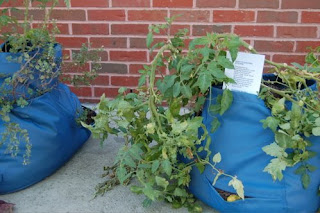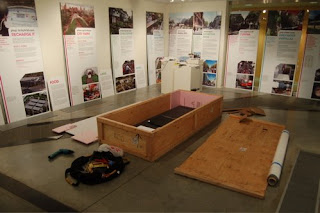
To my surprise, I received a postcard in the mail. How the senders got my new address is a mystery. Why it arrived two months after the first exhibit in Denver; I'm puzzled.
Has it really been two months?
Yes this is the postcard, but its odd to have just one, when, yes two months ago, I was on the streets of Denver handing hundreds, maybe even hundred and hundred, of these colorful cards. A couple of us would sit in the hot sun, sometimes behind protests and down the stair from our exhibit with these cards at one of the tables mentioned in the previous post. But it worked! The best part was that they don't stop here.
Inside the exhibit there was a wall full of these postcards with individual pledges toward reducing the effects of climate change. These included taking shorter showers to save water, carpooling to cut down on pollution and fixing windows to reduce a heating bill. All small and doable but significant steps when looking at it from a community point of view. The best part was that they don't stop here.
When I got the card in the mail it reminded me about my pledge to carpool to work. This was before I knew where I was going to live post-risd and how it was all going to work out with this 9-5 deal. And you know, I did not keep that pledge. Yes NOT. Gasp- but Emily you were apart of the exhibition, how could you? Hey crowd, you know, what I did do was chose to live close to work to reduce my driving and its adverse effects.
Its about flexibility and the ability to adapt to keep up with these positive intentions. Because as we know, the best part is that they don't stop here.















 The Green Constitutional Congress has been the apex of all this so far in Denver and it has been really inspiring and stimulating to see all of these people who have all created innovative solutions to problems within their areas of expertise sit down and have a conversation together at a table and in a context that we have been working to create for so long.
The Green Constitutional Congress has been the apex of all this so far in Denver and it has been really inspiring and stimulating to see all of these people who have all created innovative solutions to problems within their areas of expertise sit down and have a conversation together at a table and in a context that we have been working to create for so long.





































